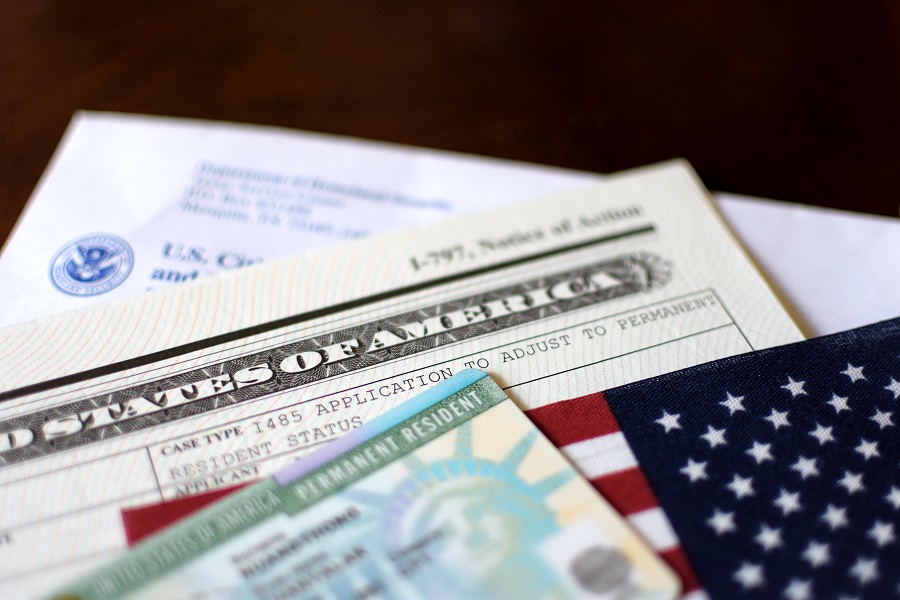
Despite cutbacks by the current administration, the United States remains one of the top destinations for asylees. U.S. immigration law offers asylees a unique benefit – they can transition from asylum to green card in just one year. Applicants must haven been physically present in America for at least one year after the asylum grant. Then, they are on generally eligible for permanent resident status (green card) and on the path to citizenship. Under current law, there is no annual cap on the number of asylees allowed to adjust status to permanent resident status.
An asylee is a person that has already made it to the U.S. border or beyond (by legal or illegal entry) and is seeking protection because he or she suffered persecution or fear that he or she will suffer persecution due to race, religion, nationality, membership in a particular social group or political opinion. Examples of situations that may qualify as persecution include: imprisoned and tortured political dissidents or supposed undesirables; fired on protesters; committed genocide against a certain race; or made sure that members of a certain religion were left out of the political process. Unlike other statuses that may require eligibility through an employment- or family-based relationship, a green card for an asylee can be more straight-forward.
Benefits of Going from Asylum to Green Card
Unlike refugees, immigration law does not require asylees to apply for a green card one year after receiving asylum status. However, it still makes good sense to apply for permanent residence as soon as you become eligible. Your asylum status can actually be revoked by the U.S. government if:
- Conditions in your home country improve so that you can safely return; or
- You no longer qualify as an asylee.
Becoming a green card holder puts you on the path to citizenship. Permanent residence means that you have a permanent home in the United States if you want it. You are not obligated to stay.
Eligibility for Permanent Resident Status
Asylees apply for a green card while inside the United States. That process is called adjustment of status. In fact, an asylee may adjust status to a permanent resident if the asylee meets the following four requirements:
- Asylee has been physically present in the United States for at least 1 year after being granted asylum.
- Principal asylee continues to meet the definition of a refugee, or the derivative asylee continues to be the spouse or child of the principal asylee.
- Asylee has not firmly resettled in any foreign country.
- Asylee is admissible to the United States as an immigrant at the time of examination for adjustment of status, subject to various exceptions and waivers.
Physical Presence
Only time spent in the United States counts towards the 1-year physical presence requirement to move from asylum to green card. For a principal asylee, physical presence starts accruing on the date the U.S. government grants asylum. For derivatives, the date may vary. Derivative asylees who are physical present in the United States when the application is approved may use the date of approval. If the derivative was outside the United States on the date that the government approved the application, he or she may use the date of admission to the United States as the start date.
Additionally, physical presence is a cumulative requirement. Therefore, you must deduct any time spent outside the United States from the total days of your residency. If the asylee traveled outside the U.S. with a travel document, the time spent abroad does not count toward the total. The physical presence resumes once the asylee returns.
Continue to Meet the Definition of a Refugee
Remember, the principal asylee had to show a well-founded fear of persecution in order to be eligible for asylum status. Persecution is based on at least one of five statutory grounds: race, religion, nationality, membership in a particular social group, or political opinion. Immigration officials will not readjudicate asylum status. However, the USCIS officer will likely deny adjustment of status and even move to terminate asylum status if there is new evidence that the asylee may not have met the definition of a refugee at the time of the asylum grant. For example, traveling back to the country of feared persecution is one of the most common ways for this to happen.
A derivative asylee must continue to meet the definition of a spouse or child of the principal asylee both at the time of filing Form I-485 and the grant of permanent resident status. If the applicant’s marital relationship has ended, the derivative spouse fails to meet this eligibility requirement . A derivative child fails to meet this requirement if he or she marries or no longer meets the definition of a child (through marriage or by aging out).
Not Firmly Resettled in Any Foreign Country
An adjustment of status applicant who has firmly resettled in another country is not eligible to obtain either asylum or adjustment of status as an asylee in the United States. The U.S. government considers a person firmly resettled in another country if he or she has been offered resident status, citizenship, or some other type of permanent resettlement in another country.
Admissibility for Asylee Green Card
An applicant who wants to move from asylum to green card must be admissible at the time USCIS grants the green card. The following grounds of inadmissibility apply to asylees adjusting status:
- Health-Related – INA 212(a)(1)
- Crime-Related – INA 212(a)(2)
- Security-Related – INA 212(a)(3)
- Illegal Entrants and Immigration Violators – INA 212(a)(6)
- Ineligibility for Citizenship – INA 212(a)(8)
- Aliens Previously Removed – INA 212(a)(9)
- Practicing Polygamists, Guardians Required to Accompany Helpless Persons, International Child Abductors, Unlawful Voters, and Former Citizens who Renounced Citizenship to Avoid Taxation – INA 212(a)(10)
RECOMMENDED: Grounds of Inadmissibility Explained
The public charge ground of inadmissibility to does apply to immigrants moving from asylum to green card. If you believe that you’ve lost eligibility due to a divorce or other factor, contact an immigration attorney for additional guidance. In some cases, an attorney can help you navigate these problems.

How to Apply for an Asylee Green Card
Eligible asylees may adjust status from asylum to green card by filing Form I-485, Application to Adjust Status, and other required supporting documents. A typical adjustment of status package may include:
- Form I-485, Application to Adjust Status
- Proof of asylum status
- Evidence of 1-year physical presence in the United States
- Copy of your government-issued identity document with photograph
- Original passport-style photos (2)
- Copy of your birth certificate (if available)
- Copy of your passport page with admission or parole stamp (issued by a U.S. immigration officer) (if available)
- Form I-693, Report of Medical Examination and Vaccination Record
Generally, you may also submit an application for employment (Form I-765) and an application for a travel document (Form I-131) at the same time as Form I-485.
This list above is for information purposes only. Your situation may be different. For additional assistance preparing Form I-485 and determining which document satisfy the list of support evidence, please use an immigration attorney or prepare your application package on CitizenPath. Designed by immigration attorneys, CitizenPath is an affordable way to prepare your own application. In addition to your prepared Form I-485, CitizenPath provides you with a set of personalized filing instructions that we customize to your specific situation. The filing instructions provide detailed directions on supporting documents, how to organize your application, and where to mail it.
Family Member Eligibility
Certain family members may also transition from asylum to green card. Specifically, the the spouse or child of the principal asylee who receive a grant of derivative asylum status may generally apply for permanent residence once they meet the requirements.
Of course, to apply as a derivative applicant, you must continue to be physically present in the United States as an asylee. Additionally, the principal asylee must continue to meet the definition of a refugee.
About CitizenPath
CitizenPath provides simple, affordable, step-by-step guidance through USCIS immigration applications. Individuals, attorneys and non-profits use the service on desktop or mobile device to prepare immigration forms accurately, avoiding costly delays. CitizenPath allows users to try the service for free and provides a 100% money-back guarantee that USCIS will approve the application or petition. We provide support for the Adjustment of Status Application (I-485), Petition for Alien Relative (Form I-130), and several other immigration packages.
Want more immigration tips and how-to information for your family?
Sign up for CitizenPath’s FREE immigration newsletter and
SAVE 10%
on our immigration services



